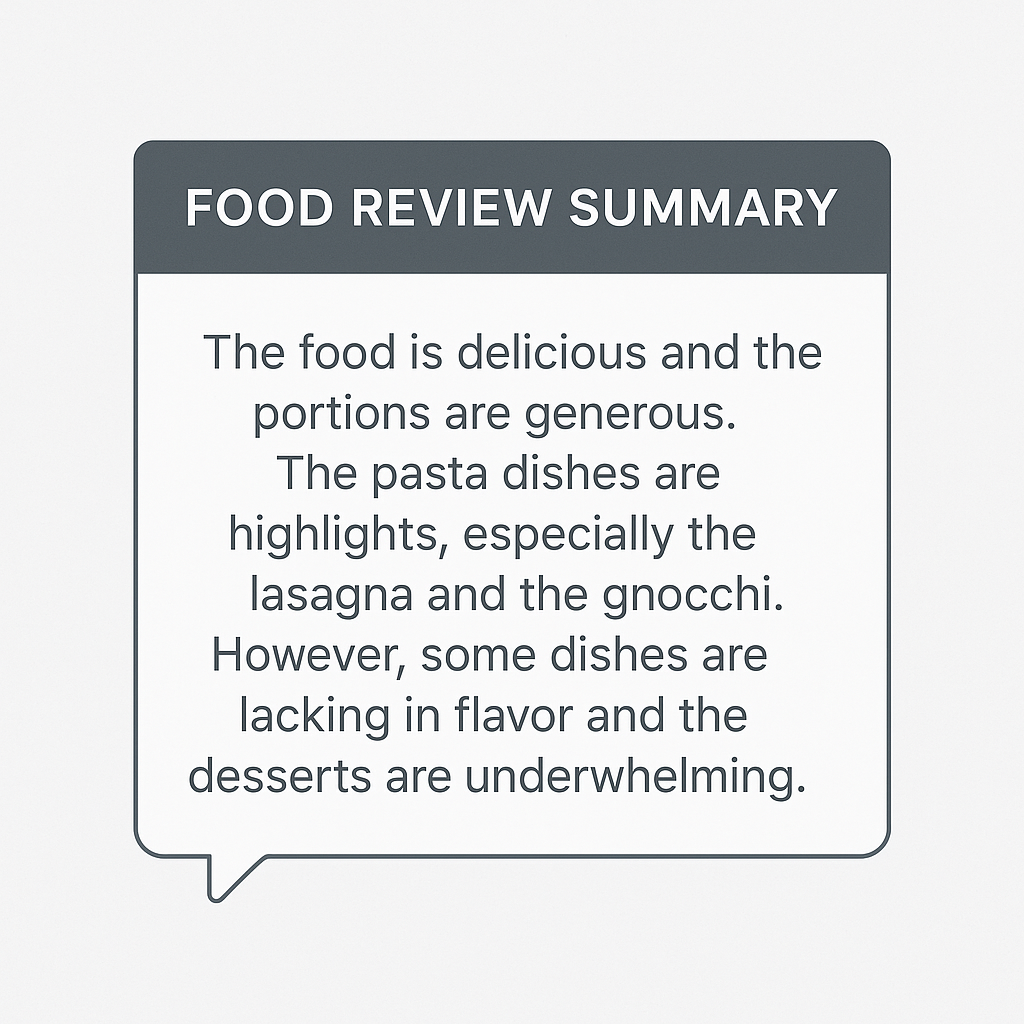Introduction
In today’s digital-first food industry, customer reviews are a goldmine of insights — but they often come in unstructured, verbose formats. At CrawlSight, we empower businesses to cut through the noise by providing clean, structured datasets collected from popular food review platforms. This data fuels intelligent models that summarize customer sentiments, highlight key dishes, and uncover trending feedback themes.
In this article, we explain how a review summarization model was built using CrawlSight’s food reviews dataset — and how such a system can revolutionize decision-making in the food tech and hospitality industries.

Why Summarize Food Reviews?
A single dish may receive thousands of customer reviews across food delivery apps, restaurant websites, and social platforms. Manually analyzing these reviews is inefficient and error-prone. Summarization helps:
- Reduce information overload: Offer concise insights without losing context.
- Identify common praises and complaints: Improve food quality and service.
- Support customers in decision-making: Quickly convey dish highlights.
- Enable restaurant owners and chefs: Track performance across locations.
Inside the CrawlSight Review Dataset
Our dataset spans thousands of restaurants across metropolitan cities, curated from sources like Zomato, Yelp, Google Reviews, and more. Each record includes:
- Restaurant details: Name, location, cuisine type, and ratings
- Review text: Raw customer feedback with timestamps
- Sentiment score: Calculated using NLP-based classification
- Dish tags: Detected using keyword extraction
We regularly update this data, ensuring it reflects real-time trends and food experiences. It is available via our API and as bulk download for machine learning tasks.
Building the Summarization Model
Using this dataset, we developed a transformer-based summarization pipeline capable of handling noisy, colloquial review data.
- Preprocessing: We cleaned HTML tags, normalized emojis, removed redundant punctuation, and grouped reviews by dish or restaurant.
- Model Choice: We fine-tuned a
PEGASUStransformer from HuggingFace, specifically designed for abstractive summarization of long texts. - Training: Using 100K+ grouped reviews, we trained the model to generate concise, 2-3 sentence summaries preserving sentiment and key food descriptors.
- Evaluation: ROUGE and BLEU metrics were used for performance validation, alongside human QA to ensure contextual accuracy.
Real-World Applications
- Food Delivery Apps: Add AI-generated summaries below each dish to help users make quicker decisions.
- Restaurant Management: Identify which menu items delight or disappoint customers the most.
- Voice Assistants: Enable audio summaries of restaurant highlights.
- Chatbots: Use summarization models to respond to queries like “What do people say about the pasta here?”
Conclusion
Food review summarization is more than an AI showcase — it’s a practical, scalable solution to decode customer voice in the restaurant industry. Powered by CrawlSight’s high-quality dataset, our model delivers rich, concise summaries that enhance user experience and inform business decisions.
If you're a food-tech company, restaurant chain, or delivery app looking to integrate intelligent summarization into your platform — CrawlSight has the data and the tools to help you do it.



